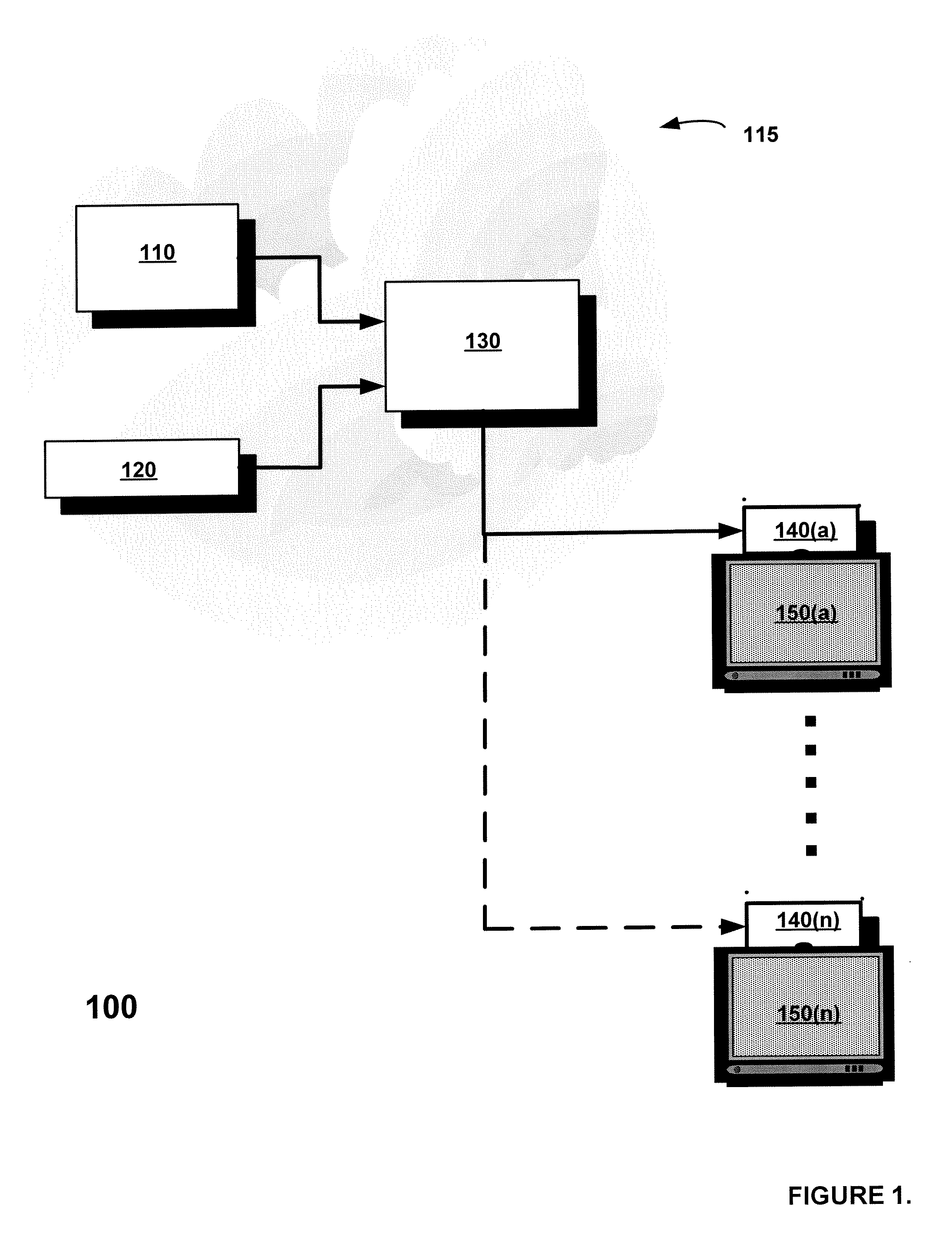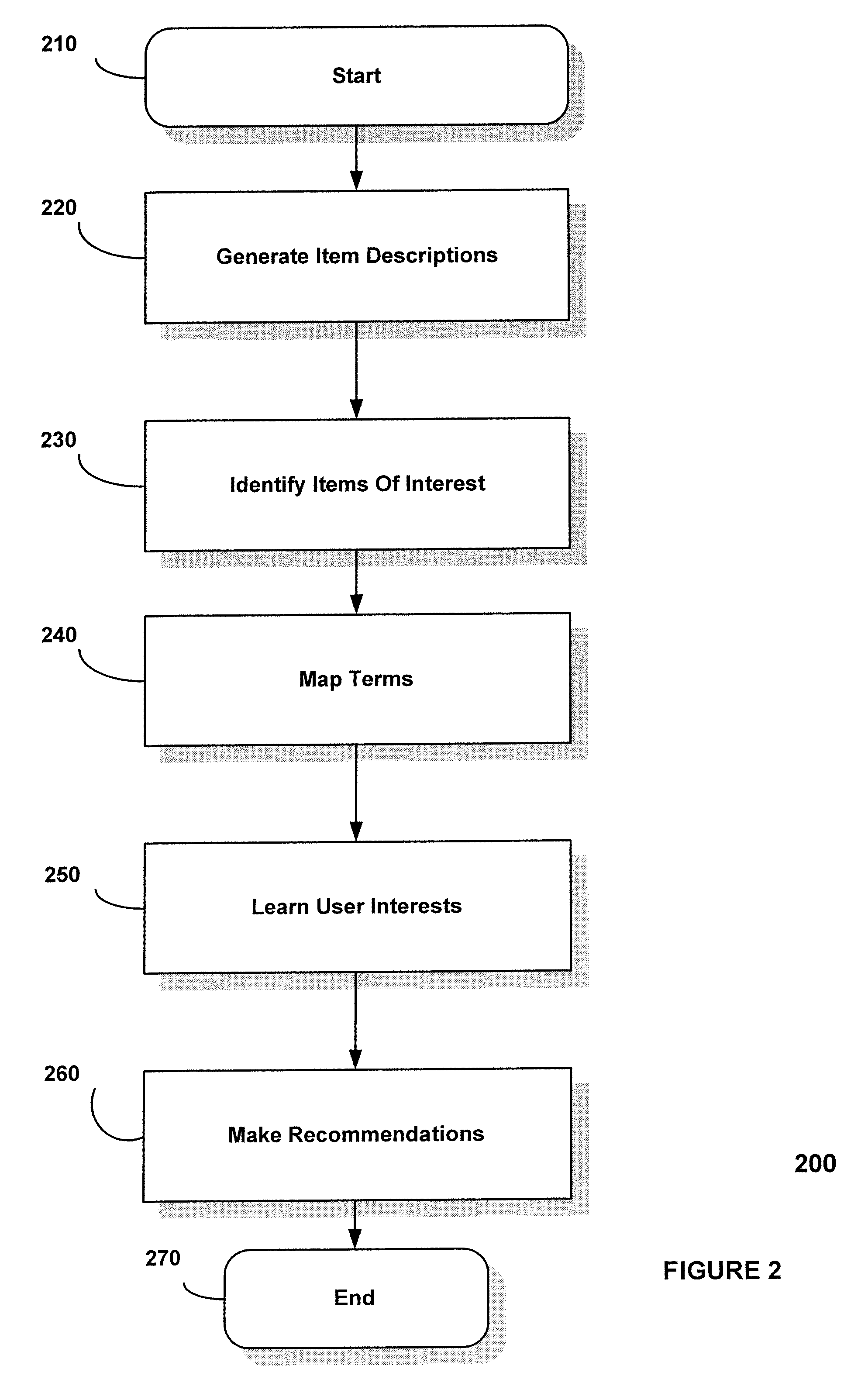System and method for recommending items of interest to a user
a recommendation system and user technology, applied in the direction of instruments, selective content distribution, marketing, etc., to achieve the effect of enhancing privacy
- Summary
- Abstract
- Description
- Claims
- Application Information
AI Technical Summary
Benefits of technology
Problems solved by technology
Method used
Image
Examples
embodiment 440
[0091] In the next step 240, the IPGX learning embodiment 440 is configured to perform term mapping by analyzing the variable terms (FIG. 5, t1-t64) that are most useful for describing programs of interest, and assigning them to bits in the term bit vector via the term map. To do this, the Learning engine tracks the number of times it encounters particular terms associated with programs of interest and, when a threshold is reached, it adds the term to the Term Bit Vector for that set-top box. Terms are added sparingly to assure they represent strong viewer preferences and to make best use of the limited number of available bits. This step 240 attempts to learn what content features or attributes (actors, channels, directors, title words, etc.) the viewer likes best (i.e., watches most frequently). Once this step is done, a complete bit vector representing a program of interest (with its associated relevance value) is ready to be assigned to an appropriate cluster.
[0092] In step 250,...
embodiment 435
[0093] Finally in step 260, new programs represented as Bit Vectors are passed to the IPGX Ranking engine embodiment 435 in order to assess their potential interest to the viewer. Using the IPGX Preferences Tree, a candidate program is filtered into the cluster containing the most similar examples and a score is generated for ranking the candidate program against other programs. The scores are a measure of similarity between the candidate program and the example programs in that cluster combined with the relevance values of those example programs. Candidate programs that are most similar to the most relevant examples receive the highest scores. Feedback about the quality of clusters and program recommendations can be used to modify which attributes are used and what clusters are formed.
[0094] The methods of Information Retrieval and Machine Learning used in certain embodiments have many characteristics in common—making them very compatible and powerful when used in combination. Thes...
PUM
 Login to View More
Login to View More Abstract
Description
Claims
Application Information
 Login to View More
Login to View More - R&D
- Intellectual Property
- Life Sciences
- Materials
- Tech Scout
- Unparalleled Data Quality
- Higher Quality Content
- 60% Fewer Hallucinations
Browse by: Latest US Patents, China's latest patents, Technical Efficacy Thesaurus, Application Domain, Technology Topic, Popular Technical Reports.
© 2025 PatSnap. All rights reserved.Legal|Privacy policy|Modern Slavery Act Transparency Statement|Sitemap|About US| Contact US: help@patsnap.com



